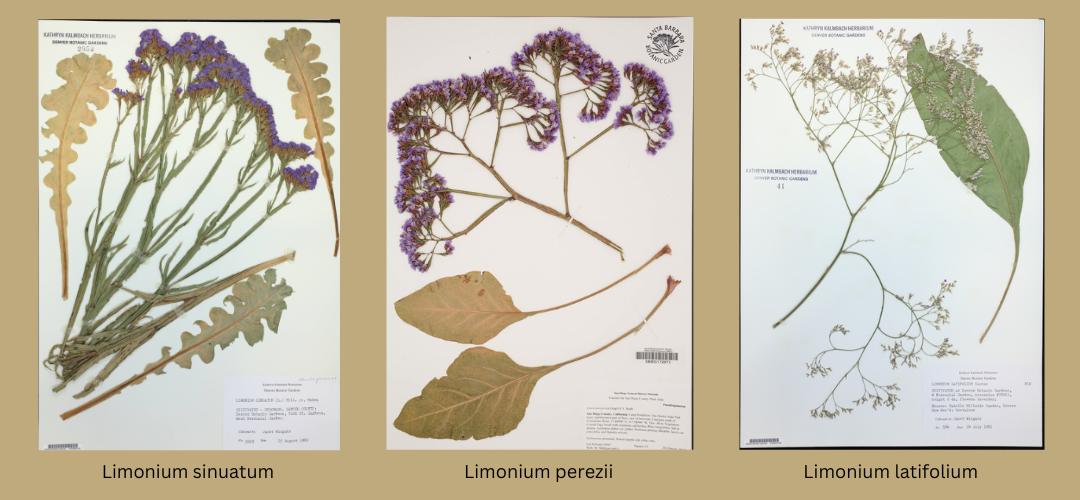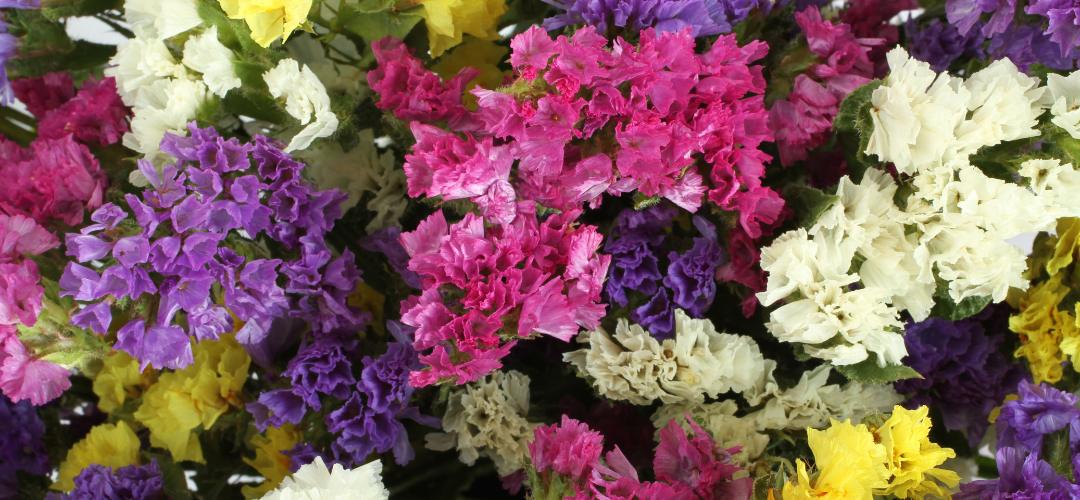What’s YOUR statice? My current statice of choice is Limonium latifolium, but it all comes down to personal preference. So let’s dive in to the details!
First, some basics.
Statice is the common name for Limonium, which is a genus of about 120 or, get this—600 flowering plants. Yes, that’s a wide range!
Like so much of the information we have about plants, “facts” differ quite a bit among various expert sources. Also, the information we have on plants is always evolving. While we’re on the subject, here’s one more thing to know:
In addition to the common name statice, Limonium plants are also commonly referred to as:
– sea lavender,
– sea foam,
– and marsh rosemary
But here’s the kicker: Limonium plants are NOT related to rosemary or lavender. Or foam, for that matter.
When you look at the photo below, though, you can understand how the ‘sea lavender’ name makes some sense.
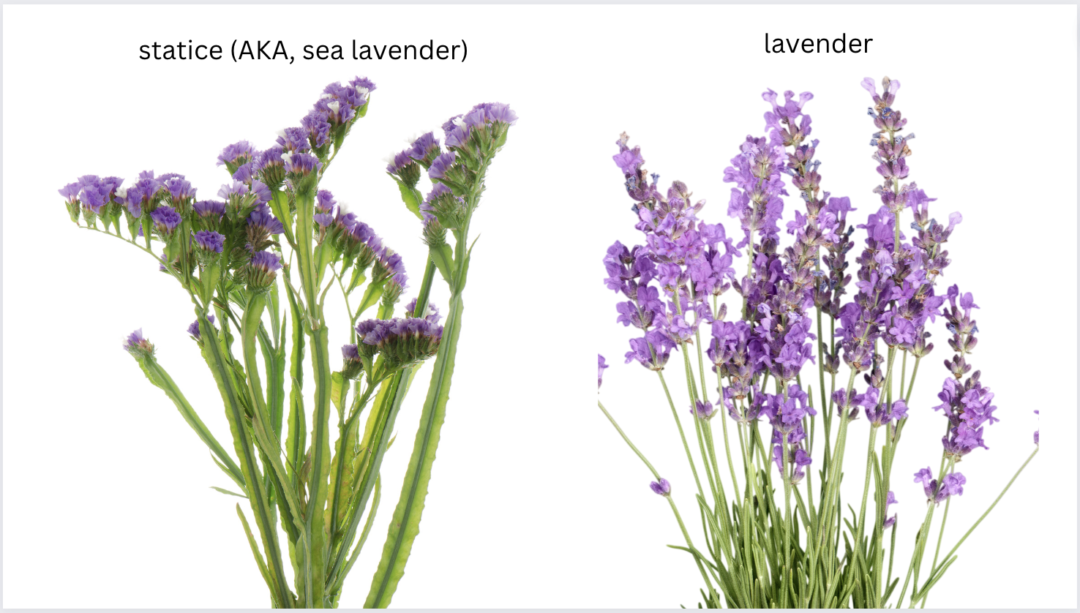
For the sake of brevity, I’ll only talk about a few types of statice today.
The main feature of this small perennial is the colorful calyx which surrounds its flower. These are often at the end of a rather long and sturdy stem, which adds to its beauty in the garden and its usefulness as a cut flower. The longevity of the stem and calyx also make statice a brilliant dried flower.
To keep things simple, I will usually refer to the flowers and calyx (which together create the colorful display at the end of the statice stem) as ‘the flower.’
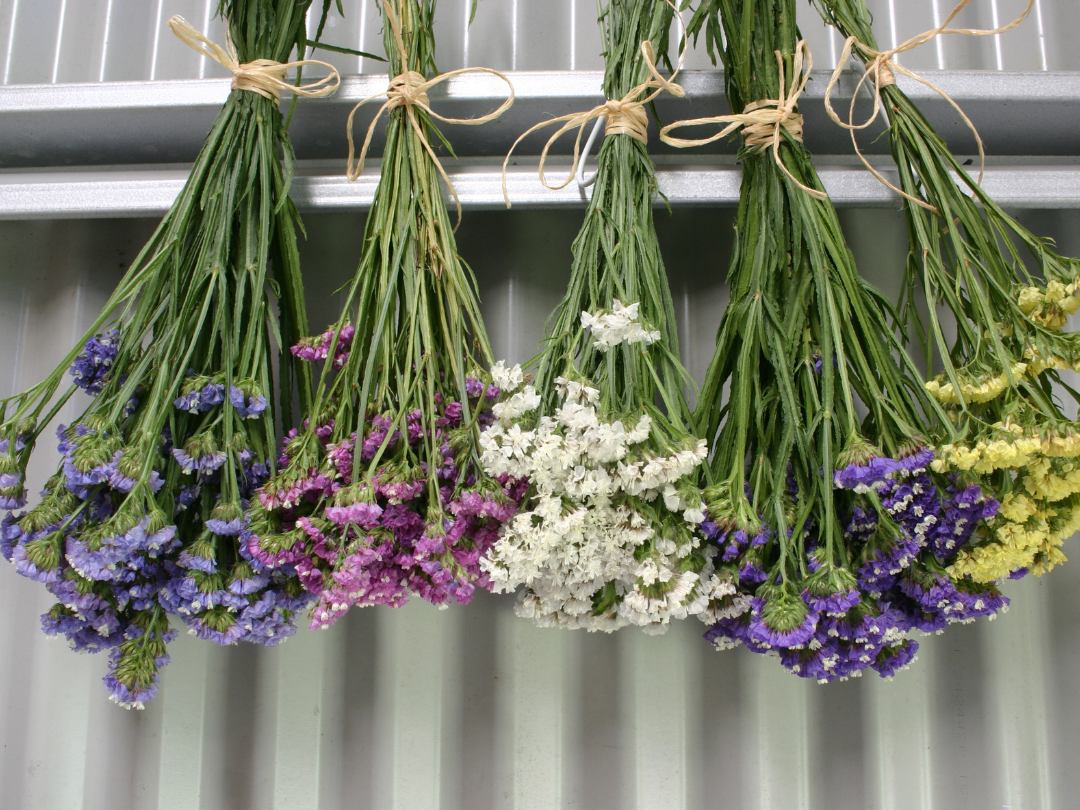
The two main groups of the genus are the hybrids Limomium sinuatum and Limonium latifolium.
Limonium sinuatum tends to have thicker stems and larger flowers which are said to last longer than those of Limonium latifolium and Limonium perezii (another one of my favorites that I just sneaked in).
Let’s take a closer look at each, starting with Limomium sinuatum.
Limomium sinuatum
Limonium sinuatum is widely grown for its use as a fresh or dried flower. It is the most common statice you’ll see in bouquets and crafts.
While I say it’s “widely grown,” however, Limonium sinuatum it is not as common in southern California as Limonium perezii, which naturalizes along the coasts and decorates many interior gardens.
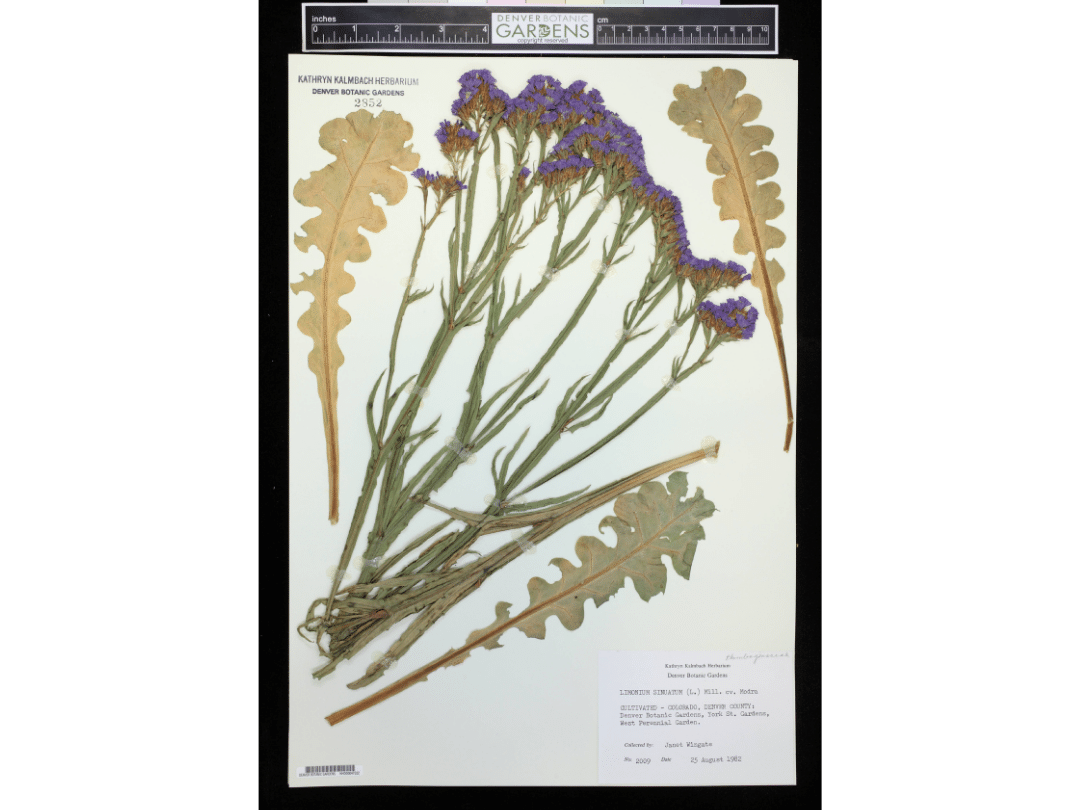
The image above is a dried Limonium sinuatum. Notice the long stem. It makes the flowers very easy to put in a vase.
Even when it’s dried, the flowers (calyx) keep their color. And what a choice of colors! You’ll see Limonium sinuatum in apricot, rose, purple, light and dark blue, white and yellow.
This type of statice has an extra common name: wavy-leaf sea-lavender.
A great garden plant
I often use statice in the gardens I build. Here are some reasons why:
- It’s an easy plant to grow, with the ability to take the heat and low water.
- It blends in nicely with many of the other drought-tolerant plants I like to use.
- It makes for a lovely cut flower.
- It’s useful in the garden! Many statice attract hummingbirds and butterflies–and detract deer.
Limonium perezii
One of my go-to statices—which I use frequently in gardens—isn’t even one of the two main Limonium hybrids.
It’s the Limonium perezii.
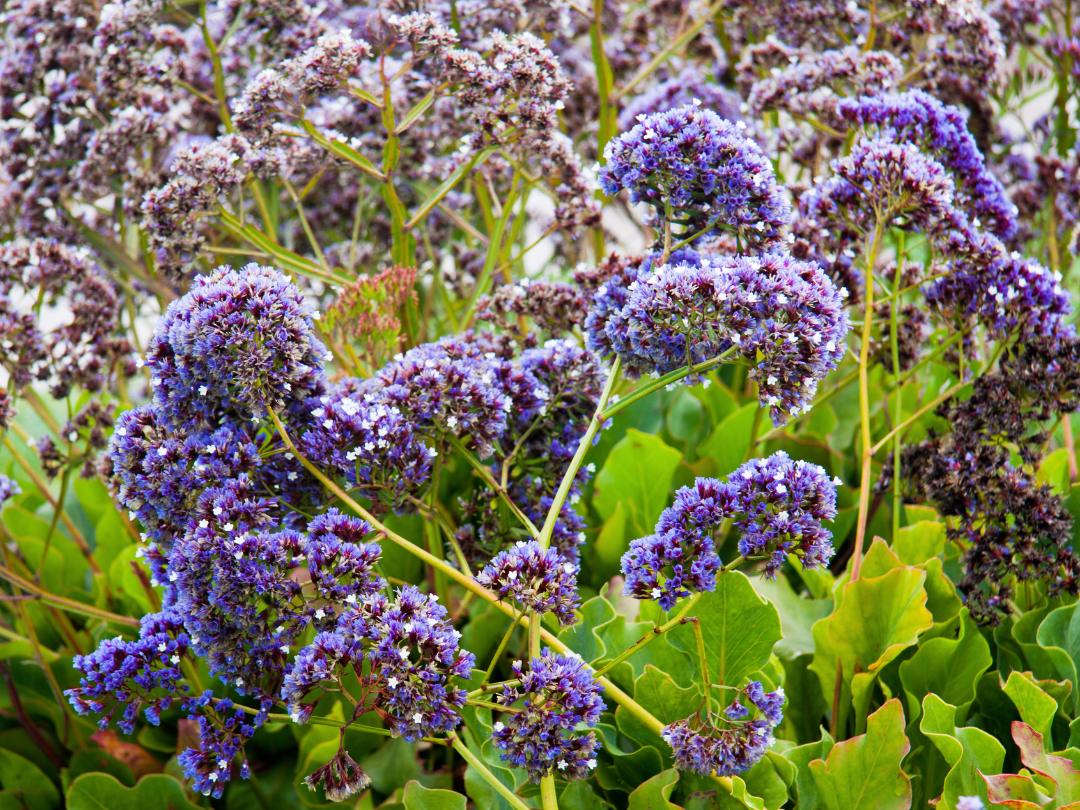
The photo above is the flower of Limonium perezii. Check out its showy bracts!
Also known as Perez’s sea lavender, this low maintenance, drought-tolerant shrub adds a big, blueish-purple floral display to the garden throughout much of the year. Especially in the summer.
It’s easy to get and grow in Southern California, where I live. It reaches 3-feet tall and wide—and requires little maintenance.
To maintain it, just cut the spent flowers and divide every few years (i.e., separate the plant into multiple plants). Or, better yet, harvest the flowers and put them in a vase!
Companion plants
Great companion plants for Limonium perezii include artemisia, rosemary, and festuca.
The lovely purple of Echeveria ‘Afterglow’ (shown below) is also a lovely companion plant to the purples and blues of statice.
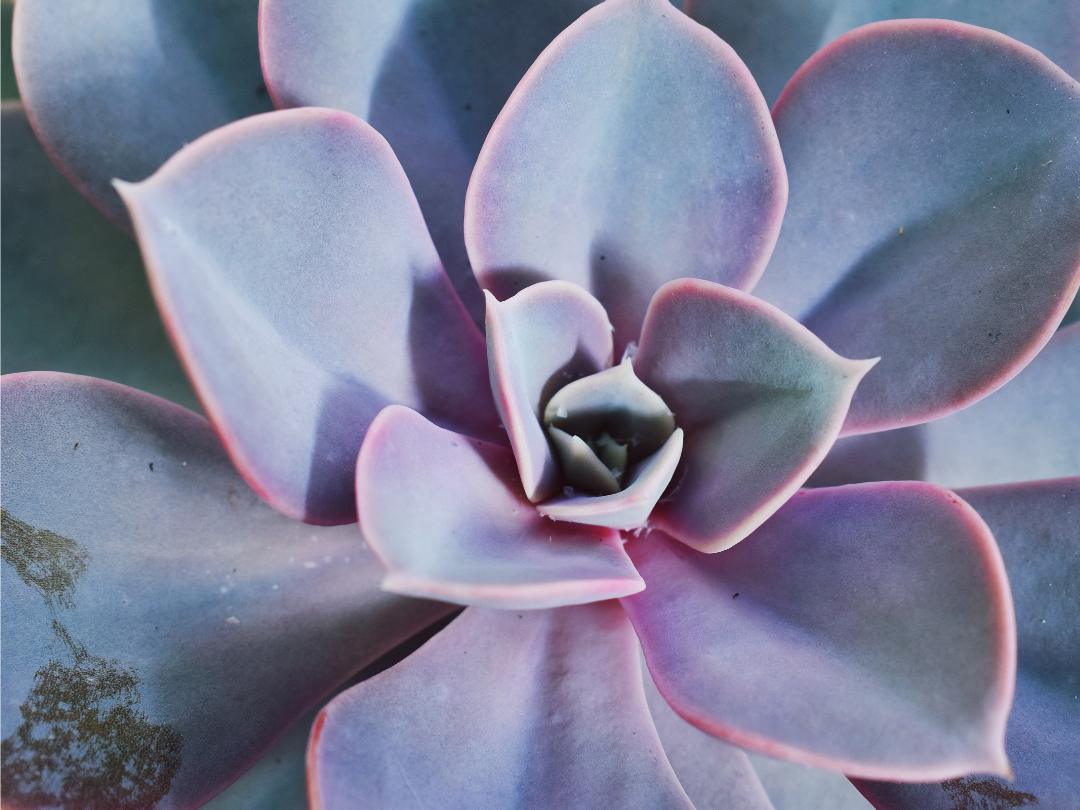
Limonium latifolium
As I mentioned at top of this post, Limonium latifolium is currently my favorite statice!
While I still use Limonium perezii, I have fallen in love with the softer, more ephemeral lavender haze of Limonium latifolium.
To confuse matters slightly Limonium latifolium is also known as Limonium platyphyllum.
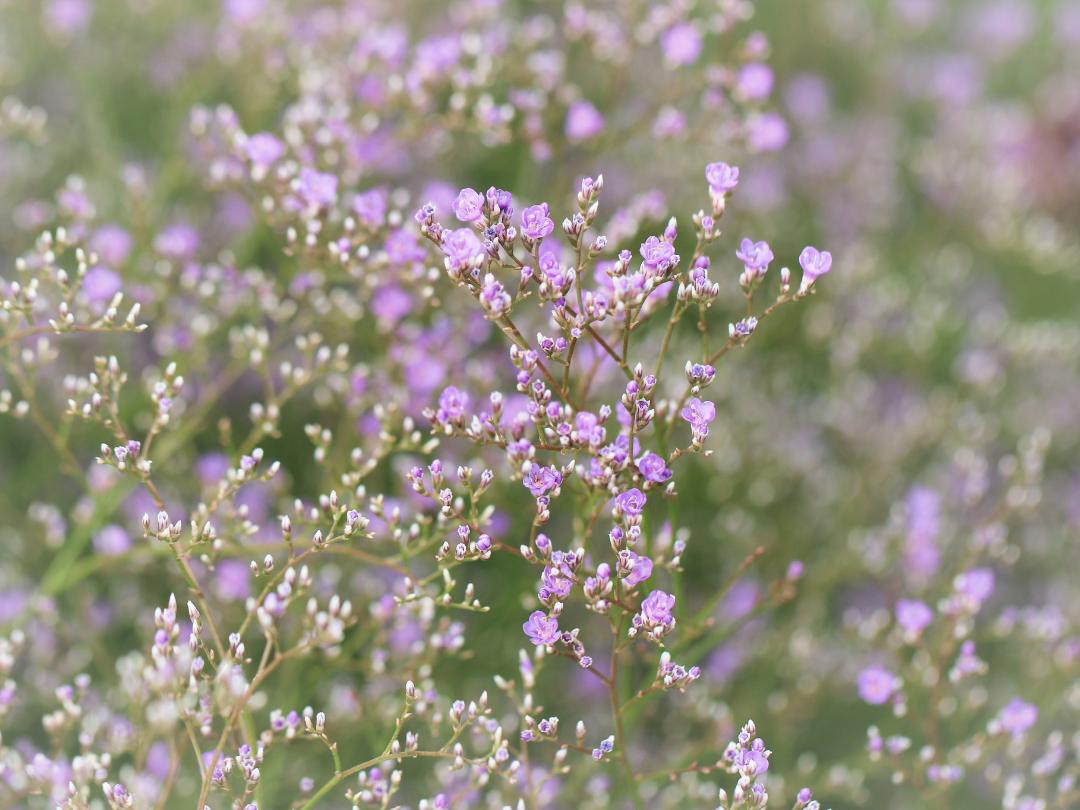
Limonium latifolium seeds are easy to find. You can even buy them on Etsy.
Limonium latifolium has a cloud-like display of lavender-blue flowers. The look is softer and more delicate than many of the other statices.
As for colors, Limonium latifolium comes in white, pink, blue–and its most common form, purple.
It blooms from about July to September. And like the other statice mentioned, Limonium latifolium make excellent cut or dried flowers.
How to use statice
Fresh flowers for a vase: Just cut the statice whenever you like the look of the blossom!
Dried flowers: Statice floral displays are often called the “everlasting flower” because of how long they last dry!
- Cut the flowers when most of the flowers are open. One way to tell if the bloom is mature is if there are tiny white blooms at the top of the flower, these very small white blossoms are actually the flower of the plant!
- Make sure to give yourself a nice long stem by cutting close to the base of the plant. Hopefully you will be able to get at least a foot of stem.
- Remove any leaves from the stem and hang the flowers upside down in small bunches in a warm, dark, and dry location with good ventilation. You don’t want direct sunlight hitting your drying flowers.
- They should be ready to use in about two weeks.
Understanding the meaning of flowers is a wonderful way to use a flower and add connection to the landscape around you.
Statice is said to symbolize feelings of sympathy and remembrance. Giving a bouquet of Limonium is a great way to say “I miss you.” It is also said to symbolize success.
How to grow statice
Statice is very economical given that it is very easy to start from seed.
Here are two options:
- Grab some seeds and start them inside. Don’t transplant them outside until after the last frost.
- Start them in the ground by directly sowing (planting the seeds) into prepared seed beds after all danger of frost.
You will want to plant 3-4 seeds, spaced about 24 inches apart. You do this because not all seeds will germinate. When the plant does grow, you still want to have some circulation between them. You will just want ONE of those 3 or 4 seeds to grow. Pull the weaker looking seedlings, thinning to the strongest plant.
Where to buy statice
For Limonium sinuatum, you might look for the QIS (Quality in Seed) series. These seeds are said to be an improvement over standard varieties. You can learn more at PanAmerican seed. The QIS series offers Pale Blue, Apricot, Deep Blue, Rose, Yellow and White Limonium and the option to get them all with the Mixture Improved Limonium seed pack.
You can find a mix of Limonium sinuatum seeds from Park Seed. This particular mix includes apricot, light and dark blue, purple, rose, yellow, and white. You can also buy a more pastel mix of this statice from Botanical Interests.
Want Limonium perezii? Check out your local nursery for the plants, or look online in your area. (If you live in Southern California like me, you can buy them online from Armstrong Garden Center).
Looking for some lively Limonium latifolium? Etsy is a good place to start!
Do you have a favorite statice? Take a look at the photos below for a quick comparison.
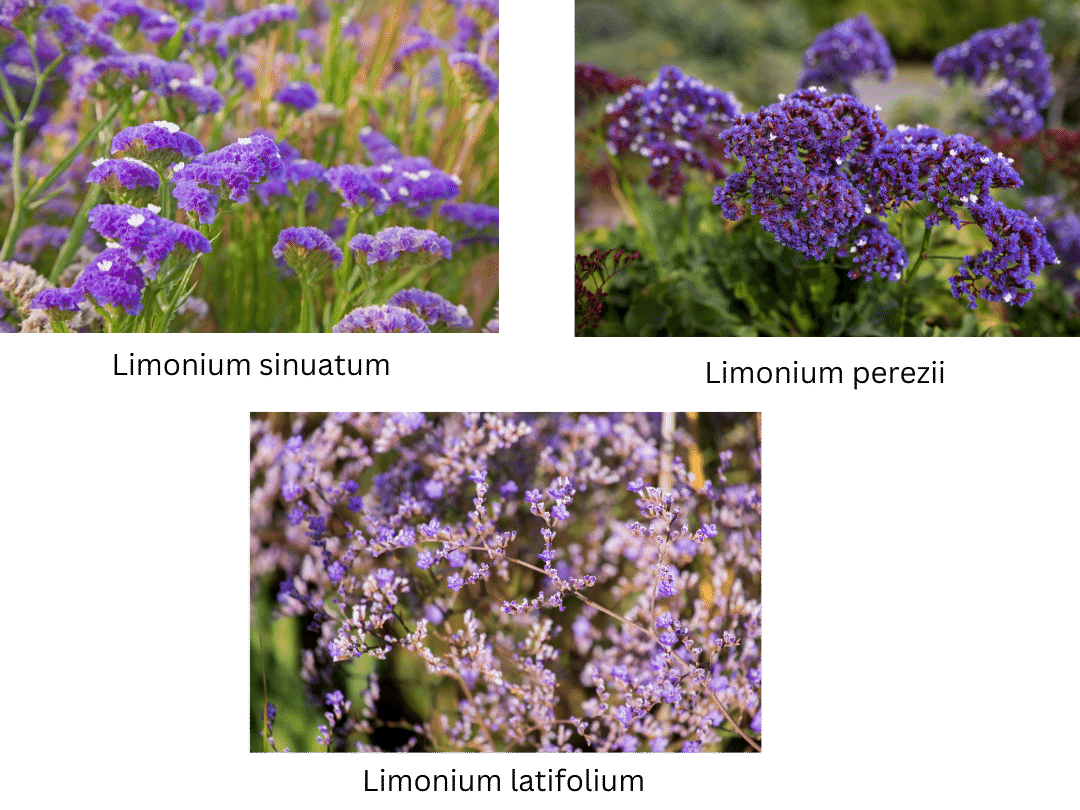
Where statice comes from
It is worth taking a moment and thinking about Limonium in its natural habitat. While this plant was cultivated for medicinal uses then domesticated for our ornamental purposes, its natural habitat is meadows.
The name Limonium is said to come from the Greek word “leimōn,” meaning meadow. The original habitat is the wild area of the Mediterranean and Central Asia, often in harsh environments with salty soils. This is such a strange thought – the statice I see is in planting beds, seldom in mass and I have never seen them in a meadow. But, I would like to!
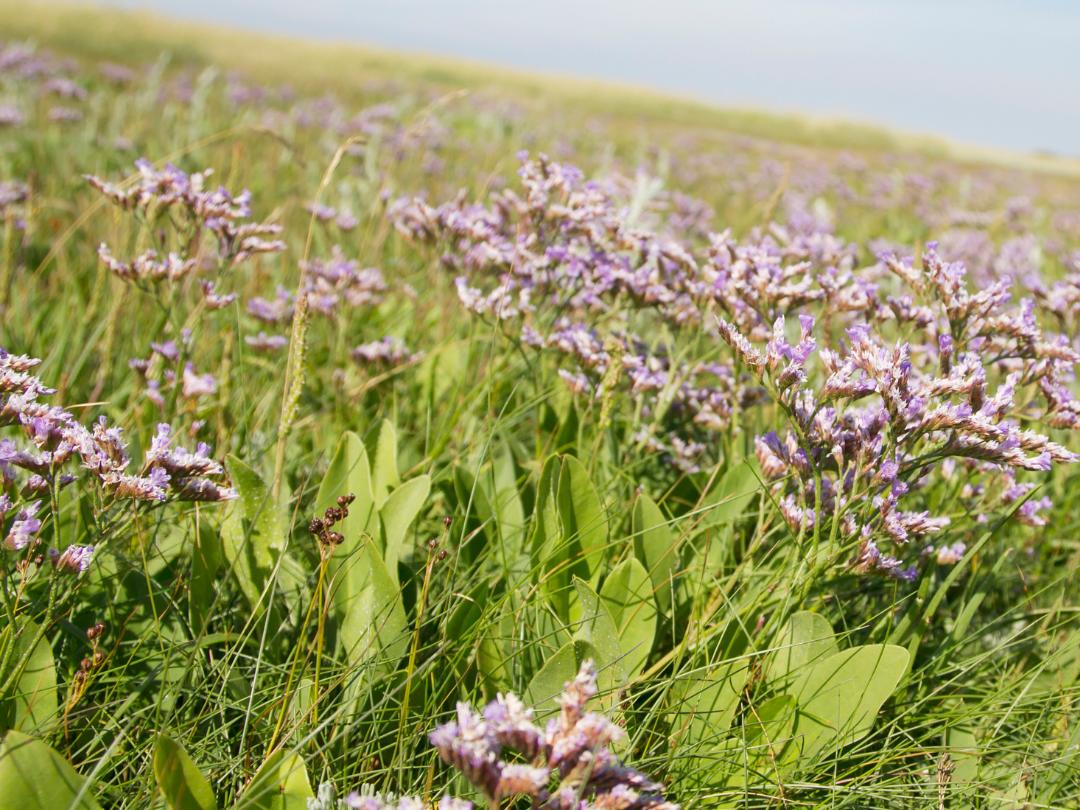
Pop quiz!
- Which statice do you see most often as a cut flower?
- Which statice is the most delicate?
- If you get a lovely bouquet of Limonium, what could it mean?
